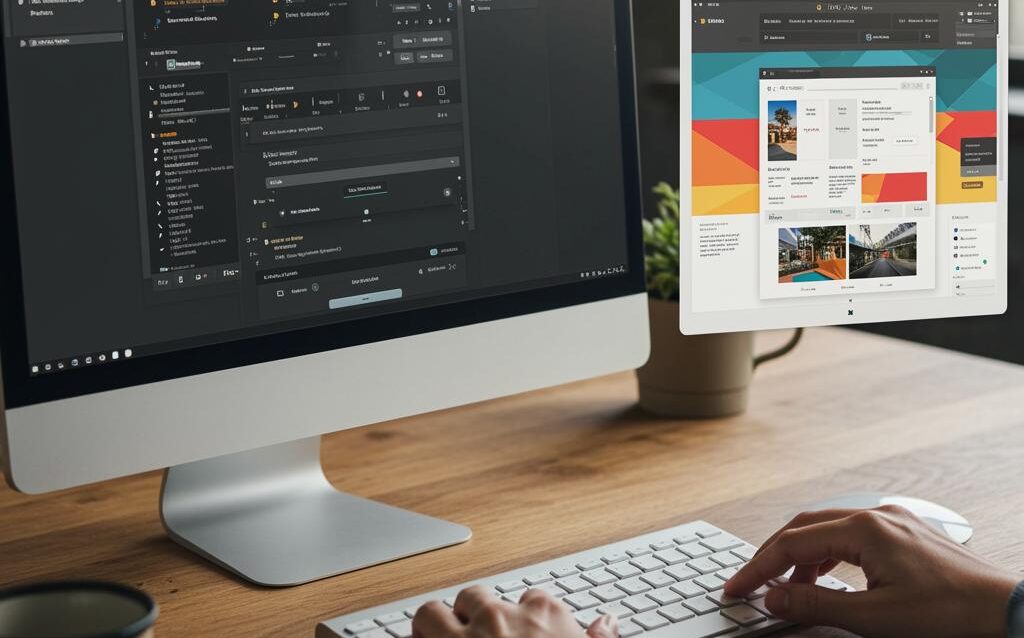WordPress UX: Design Tips for Better CMS Websites
Designing for WordPress: UX Considerations for CMS-Driven Sites
WordPress, a powerful and versatile Content Management System (CMS), powers a significant portion of the web. However, its flexibility can sometimes lead to UX pitfalls if not approached strategically. Designing a positive user experience for a WordPress site requires understanding the platform’s strengths and limitations, and tailoring your design decisions accordingly. This post will delve into key UX considerations for crafting engaging and effective WordPress websites.
Understanding Your Audience and Content Needs
Defining Your Target Audience
Before diving into design elements, it’s crucial to define your target audience. Consider their demographics, technical proficiency, and online behavior. This understanding will inform your decisions regarding navigation, content presentation, and overall site accessibility.
- Age and Demographics: Are you targeting millennials or baby boomers? Their comfort level with technology will vary.
- Technical Proficiency: Are your users tech-savvy or beginners? Simplify navigation and terminology for less experienced users.
- Content Consumption Habits: How do your users typically consume content? Are they more likely to skim or read in-depth?
Content Strategy and Information Architecture
A well-defined content strategy is the backbone of any successful WordPress site. Plan your content categories, keywords, and content hierarchy to ensure a logical and intuitive user journey. Information architecture plays a pivotal role in organizing content for easy discoverability.
- Content Audit: Analyze existing content for relevance and accuracy.
- Keyword Research: Identify relevant keywords to improve search engine visibility and user discoverability.
- Content Mapping: Visualize the relationship between different content pieces and create a clear site structure.
Navigation and Site Structure
Intuitive Navigation Menus
Navigation is paramount for a positive user experience. Design clear and concise navigation menus that guide users effortlessly through your site. Use descriptive labels and avoid jargon.
- Keep it Simple: Limit the number of menu items to avoid overwhelming users.
- Use Descriptive Labels: Clearly communicate the purpose of each menu item.
- Implement a Search Function: Provide a search bar for users to quickly find specific content.
Effective Use of Breadcrumbs
Breadcrumbs provide a secondary navigation system that helps users understand their location within the site’s hierarchy and easily navigate back to parent pages. They are especially useful for sites with complex structures.
Example: Home > Blog > Category > Article Title
Responsive Design for Mobile Users
With the majority of web traffic originating from mobile devices, a responsive design is no longer optional but essential. Ensure your WordPress site adapts seamlessly to different screen sizes and devices.
Content Presentation and Readability
Typography and Visual Hierarchy
Choose typography that is both visually appealing and highly readable. Establish a clear visual hierarchy using headings, subheadings, and font sizes to guide the user’s eye and highlight important information.
- Select Readable Fonts: Opt for fonts that are easy to read on screen.
- Use Sufficient Contrast: Ensure sufficient contrast between text and background colors.
- Establish a Visual Hierarchy: Use headings and subheadings to structure content and improve readability.
Optimizing Content for Scannability
Most users skim content rather than reading it word-for-word. Optimize your content for scannability by using bullet points, lists, bold text, and short paragraphs.
Imagery and Multimedia
High-quality images and multimedia content can enhance engagement and convey information more effectively. Use visuals strategically to break up text, illustrate concepts, and create a more immersive user experience. Remember to optimize images for web performance to avoid slow loading times.
Performance and Accessibility
Website Speed Optimization
Page loading speed is a critical factor in user experience. Optimize your WordPress site for speed by compressing images, leveraging browser caching, and minimizing HTTP requests. Use a caching plugin to further improve performance.
Accessibility Considerations (WCAG)
Ensure your WordPress site is accessible to users with disabilities by adhering to Web Content Accessibility Guidelines (WCAG). This includes providing alternative text for images, using semantic HTML, and ensuring sufficient color contrast.
Testing and User Feedback
Regularly test your WordPress site on different devices and browsers to identify and fix any usability issues. Gather user feedback through surveys, user testing, and analytics to continuously improve the user experience.
Conclusion
Designing for WordPress requires a holistic approach that considers both the platform’s capabilities and the needs of your target audience. By focusing on intuitive navigation, readable content, performance optimization, and accessibility, you can create a WordPress site that provides a positive and engaging user experience, ultimately leading to increased user satisfaction and achieving your website goals. Remember that UX is an ongoing process, and continuous testing and refinement are essential for maintaining a high-quality user experience over time.

